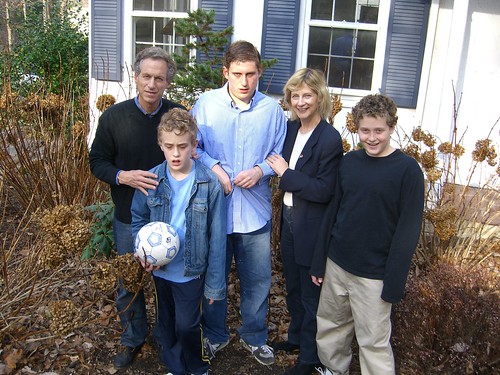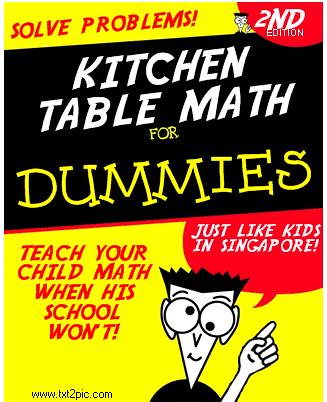re:
Rory's postI wouldn't impose a peer-tutoring practice on a class of kids for all the reasons Rory and everyone else has mentioned.
I do want to point out, though, that teaching, tutoring, and writing, when freely undertaken, are good for the teacher, tutor, and writer.
Most teachers & writers will tell you that you always learn more about your subject when you teach it or write about it. There's no question this is true for me.
It's so true that learning-through-writing is a big part of the reason I write Kitchen Table Math.
It's through reading
and writing about education that I learn about education.
teaching and gapsThe literature on background knowledge and expertise has given me a couple of ideas about why teaching is good for the teacher, not just the student.
For one, teaching or writing about a subject reveals knowledge gaps you didn’t know you had.
I had a vivid experience of this while working with
John Ratey on
Shadow Syndromes. John was keen on
Richard Davidson’s work on
left brain/right brain and depression, so I was writing a passage summarizing one of the main studies.
I couldn’t do it.
The study seemed obvious and simple: left brain happy, right brain sad.
But as I tried to explain this idea everything kept coming unglued. I wrote and rewrote and rewrote again; I couldn't get it down. The whole thing just kept collapsing in a heap.
I called John. He couldn't help me, though; the study seemed clear enough to him.
It seemed clear enough to me, too.
Why couldn’t I just write it down?
Eventually I diagnosed the problem. I seemed to be dealing with a contradiction inside the study itself.
caveat: I don’t remember the details well enough to be confident I’ll describe it correctly, so take this with a grain of salt.
While the study's "Big Idea" was left brain happy/right brain sad, at one point Richardson and his colleagues described people who were depressed as showing increased
left brain activity.
That was what was tripping me up.
I re-read several times, trying to see whether I was just not understanding the prose.
In the end I had to call up Davidson and say: “Is there a contradiction in your study?”
There was!
His answer was matter of fact, something along the lines of, “Yeah, we were puzzled by that, too.”
I think he said (
not fact-checked) his team was wondering whether maybe you see a temporary spike in left-brain activity as a person is becoming depressed. Maybe the left brain "burns itself out" trying to offset the gathering depression. If that were true, higher right-brain activity might be the end result of a depressive process.
This was speculation. In fact Davidson didn't know why they had a finding of a temporary increase in left-brain activity. The overall finding of left-brain happy/right-brain sad was correct, but the finding that at some point along the line depressed people showed increased activity in the left-brain was also correct.
My point: John and I had a gap in our knowledge of Davidson’s research that we didn’t recognize until I tried and failed to explain Davidson’s study to readers.
schemasI’ve come to think there’s another reason why teaching, tutoring, and writing increase the teacher’s knowledge.
Knowledge consists of (at least) two things:
- Discrete or semi-discrete facts, skills, procedures, concepts
- The structure, organization, or schema into which the facts, skills, procedures, and concepts fit
I think teaching forces you to develop and refine your schema. Writing nonfiction certainly does. When people pay me to write nonfiction, they’re paying me largely for the schema I can produce.
You have to develop or refine your schema, because it's largely the schema that makes your work understandable to a novice.
If discrete facts & concepts were all you need to master a subject, we could learn everything we need to know from encyclopedias. But in fact an encyclopedia makes a lousy textbook. That's what’s wrong with a lot of U.S. textbooks; they’re too much like encyclopedias, not enough like books.
As I say, I wouldn’t impose a peer-tutoring program on kids during school hours.
But I would encourage my own kids to do some tutoring outside class if the opportunity arose. I've always wished my own school would set up a volunteer tutor program in which students, parents, and community residents could tutor kids who need it.
_______________
Buddha on the Brain (Davidson & the Dalai Lama)













